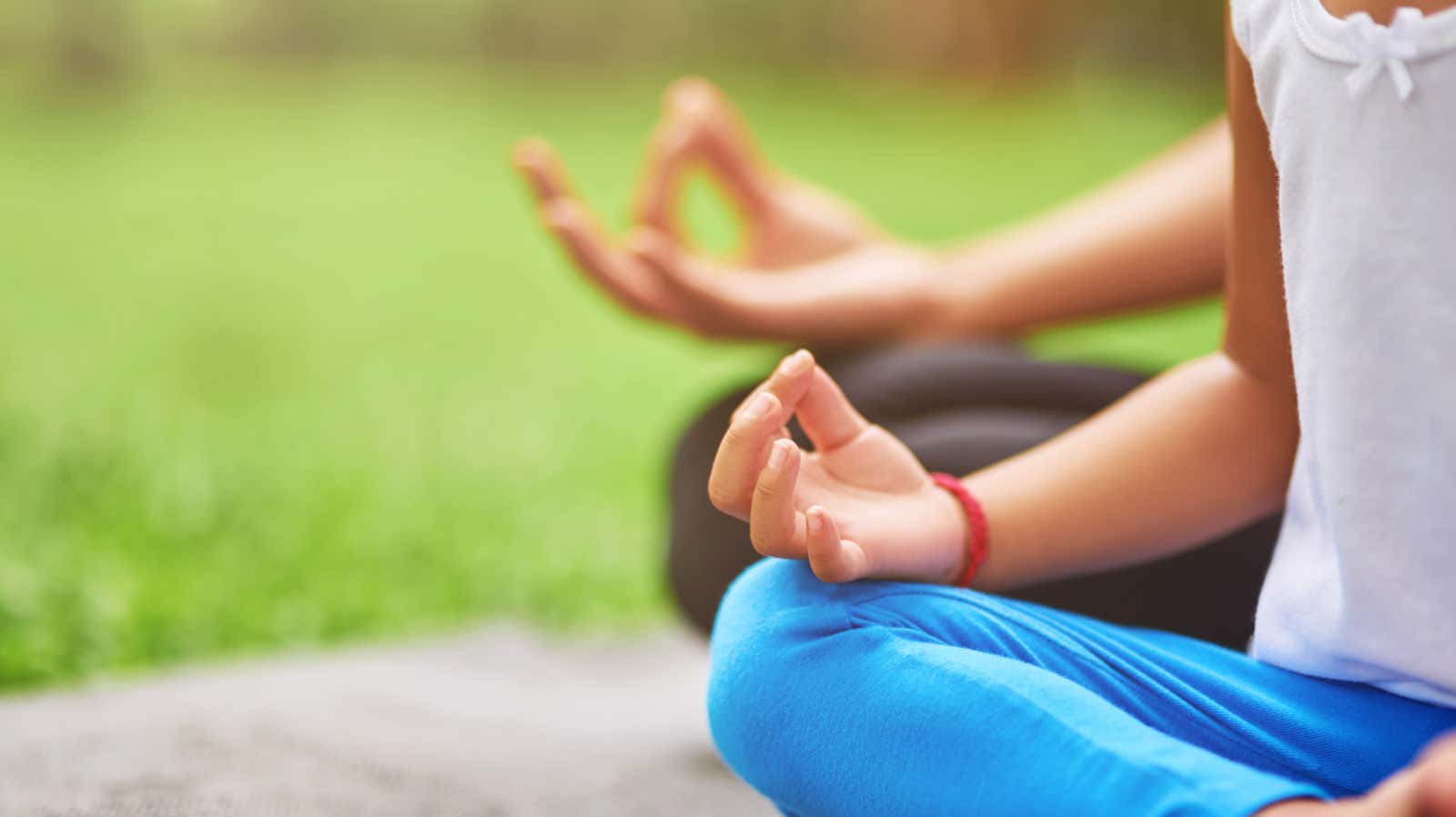How to Start Meditating With Your Child

If our children seem to be more planned, more anxious, and more pressured than ever before, it is because they are likely to be. It can be difficult for them (and us!) To find ways to disconnect and relax. But for preschoolers, a few minutes of meditation every day can teach them to stop, focus, and breathe.
If you already meditate regularly yourself, you know the relaxing and stress-relieving effects it can have on your mind and body. The American Academy of Pediatrics states that children can get the same benefits:
A number of studies in the school setting also show improvements in attention and behavior. Several studies have shown benefits for attention deficit hyperactivity disorder (ADHD), anxiety, depression, school performance, sleep, behavioral problems, and eating disorders. For example, a trial of 300 low-income urban minority high school students using school mindfulness instruction resulted in improved psychological functioning and fewer symptoms of post-traumatic stress disorder (PTSD).
There are also physical benefits as it calms the nervous system and lowers stress hormones. Research has shown benefits for gastrointestinal symptoms, obesity, headaches, high blood pressure, pain sensitivity, and immune function.
And if you are not meditating yet, but wanted to try, you and your child can start together.
Establish a daily routine
Meditation can be especially beneficial for children before bed, as a way to relax after the day and relax the body and mind before bed. But you may find that it is actually more beneficial for your child to do some awakening meditations if he starts to move slowly in the morning. Or right on their way back from school for a soothing transition into the evening.
Anything that works best for you and your child is fine; the key is to incorporate it into your daily routine. And it doesn’t have to be long sessions. Here are the time frames recommended by the AAP by most pediatricians:
- Preschool children: a few minutes a day.
- For younger students: 3-10 minutes twice a day.
- Teens and Adults: 5-45 minutes per day, or more, depending on preference.
Find a comfortable position in a quiet area of the home. This can be a comfortable chair, sit on the floor with your back against the wall, or lie flat – whichever is more comfortable for you.
Find the tools that suit you
For most people – and especially for kids who are just starting out – it can be helpful to learn the practice of meditation from a guide. There are many videos, apps, audiobooks, and podcasts to help you and your child meditate together. Here are a few of our favorites to try to get you started:
Cosmic Kids! Yoga (YouTube)
Cosmic Kids’ Jaime has a collection of videos for kids about yoga and mindfulness. Her Peace Out series offers short meditations for children. Here are some of them:
- Time Out teaches kids to take a break and ponder what they are thinking and feeling and how to pay attention to their breathing (as a Zen ninja warrior would do with Sharp Laser Focus).
- Friendly Wishes allows children to imagine their kindness as a pebble swaying on the surface of a lake. “Be happy. Be safe. I wish you health.”
- Your Little Star helps children imagine their guiding star as a partner in making good decisions.
(You can come to Cosmic Kids today for meditation, but you will probably stay for yoga. As Daniel of our Offspring Facebook group said: “My kids love this channel. Than 10 minutes can be a problem, but it will rip 45 minutes without any problems. Cosmic Kids Yoga “.)
Once Upon a Time in Peace (audiobook)
This audiobook is over an hour long, broken down into 10 minute stories designed to help kids remember their breathing and their body so they can relax before bed.
Day scholars / researchers at night (podcasts)
The Daytime and Bedtime Explorers Podcasts is a series of meditations designed to teach mindfulness and tranquility to help children fall asleep. Each episode of the daily serial is about 5-7 minutes long; The bedtime episodes are slightly longer, 11-14 minutes, and are all conducted in the soothing voice of mindfulness coach Amy Taylor-Kubbaz.
Channel Go Noodle “Flow” (video)
Your kids may already be familiar with Go Noodle from videos their teachers play (and dance to) in class. But Go Noodle also has a section for families with many channels you can play at home, including a “streaming” channel. Flow offers ten different videos on mindfulness with different meditation techniques for children.
Headspace for Kids (app)
Headspace is one of the top concerns in guided meditation apps, so it’s only natural that they should have a meditation library for kids. You can try Headspace’s free 30-day trial; thereafter, the cost of accessing children’s meditations on five topics is $ 12.99 per month: calmness, focus, kindness, sleep and awakening (plus all guided meditations for you). Children’s activities were adapted for three age groups: 5 years old and younger, 6-8 and 9-12 years old.
As your children learn to meditate, remind them that they can use the techniques they are learning while meditating in times of stress, such as before an exam at school, before they are about to give a speech, or when they are experiencing particularly strong emotions.